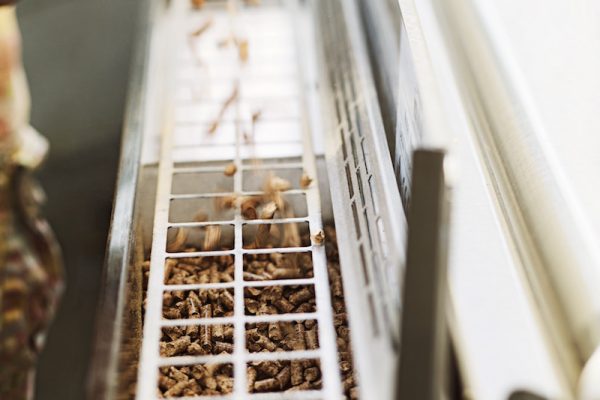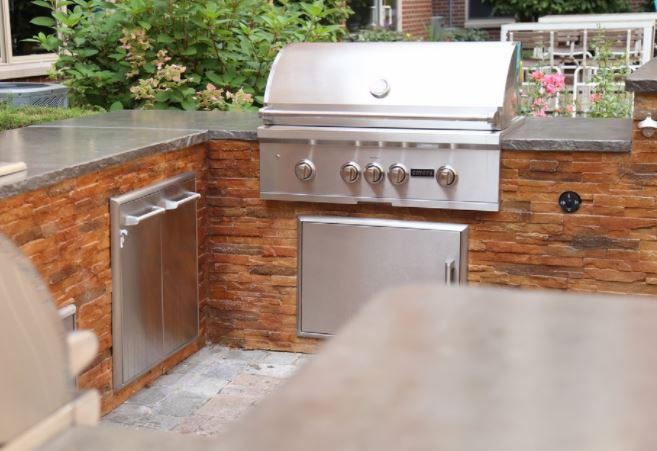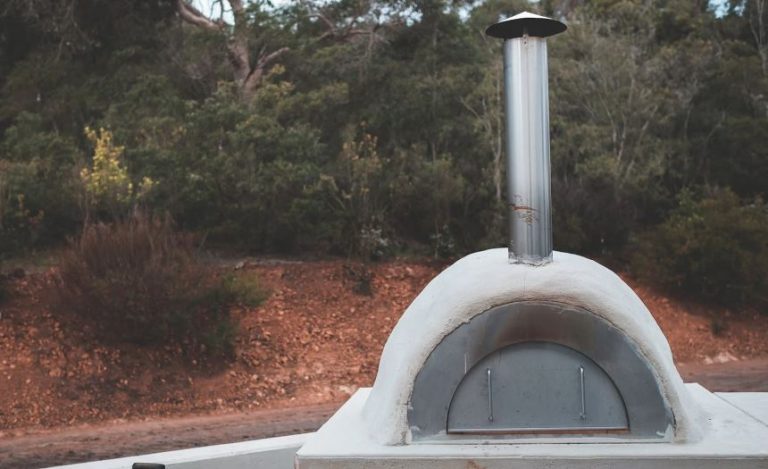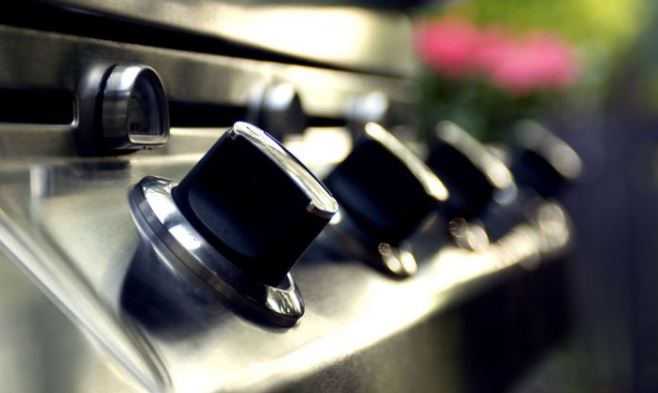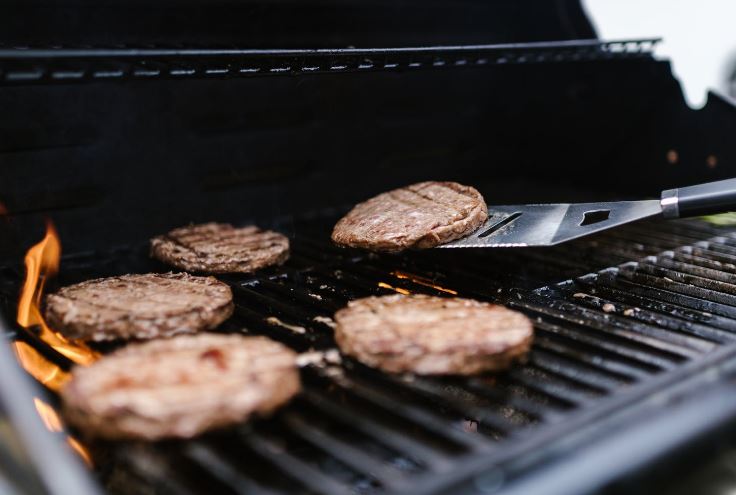How Does a Pellet Grill Work?
What is a pellet grill and how does it work?
As a relatively recent invention, the pellet grill has been taking over the world steadily but surely. Formerly a stand alone in the backyard, it has now been integrated into some of the more decked out outdoor kitchen configurations across the U.S.
If you are one of those outdoor cooking aficionados or you just like to invite some of your friends over on a sunny weekend and have a barbecue in your backyard, you will definitely like this modern marvel of ingenuity.
Continue below as we check out the benefits of wood pellet grills, how they work, and comparisons against the regular charcoal grill or gas grills.
Pellet Grill Background
First experiments with using wood pellets for grills date back to the early 1980’s. They were done by Joe Traeger’s company (Traeger Grills) and so the Traeger pellet grills are said to be the first pellet grill brand.
The family-owned heating company was trying out new and alternative ways for home heating when they seem to have made the discovery of the pellet grilling by chance.
It was soon after that they figured out how to attach a thermostat to their invention to control temperature range and the new era of grilling was born.
The addition of thermostats was the key to this because it allowed people to set the temperature range and walk away.
Not long after that, many new manufacturers joined in on making pellet grills such as Memphis Grills, Pit Boss Pellet Grills, Camp Chef, and Grilla Grill among others.
The technology behind manufacturing it has since inevitably advanced and today we have pellet grills with computer thermostat electronic control, that even have their own Wi-Fi network, just so you can connect it with your smartphone and control the temperature and the cooking process that way.
The fuel source for the pellet grillsmoker grills has remained the same – wood pellets. Pellets made from compressed wood shavings and sawdust, so it is in the heart a very economical solution because it uses the natural wood byproducts that remain in the process of woodworking.
Pellet Grills At a Glance
The pellet grill is about the same size as average gas or charcoal grills. It even looks similar on the outside, but it is when you go inside and check the innerworkings that the differences emerge.
A pellet grill works much like a pellet furnace. The pellets are placed in a hopper and an electric auger system feeds them to the burn pot.
The speed of the feeding is dictated by the digital control thermostat, so you can efficiently control temperatures from warm to burning hot.
The burn pot ignites the wood pellet and the heat is carried via the air convection system, which mixes outside air with the hot air from the fire.
The difference is that in a pellet furnace the smoke is separated with a heat exchanger so that you don’t have smoke in your room, but in a pellet grill, the smoke is left to circulate inside in order to produce that juicy smoke flavor and enrich the meat. This is similar in theory to how convection ovens air flow systems work.
The previously mentioned electric auger system is a long horizontal tube, with an electrically rotated screw inside.
The screw turns similarly as in a meat grinder, only that it doesn’t grind the pellets fuel, but only pushes them in the burn pot at the rate your desired temperature dictates.
This is all automatically controlled by the thermostat. All you really need to do is load up the pellets in the hopper and set your preferred temperature.
The burn pot has its own air flow, so there is enough oxygen for the fire to burn. This controls the rate at which pellets are consumed and the temperature limit.
If the air flow is low and slow the pellets will burn slowly and more smoke will be created. The converse is also true.
All of these mechanisms are powered by electricity, so you will need to have access to a power source. This is another distinguishing factor between a pellet grill vs a charcoal grill which usually doesn’t require any electrical power at all to cook.
Indirect Heat Cooking
Pellet grills are also called pellet smokers and it this fact has been underscored in the above description of how they work.
Their real advantage over regular grills really comes when you realize how heat is distributed.
Here, the heat is indirect, meaning your meat does not cook from direct flames, but the heat from the flame is distributed with the help of the air convection system.
This allows the pellet grill to distribute the heat and smoke efficiently and all around the cooking area thus allowing you to cook larger quantities of food, and also larger cuts.
This is also the point in which such a precise temperature control system really shines.
Fat Drip Regulation
You might be wondering at this point that if the cooking process is so well taken care of and almost no work needs to be invested in it, what happens to all that grease dripping from the meat cooked in?
Well, normally all pellet grills have a built-in dripping plate, that catches the grease drippings and fat dripping down.
You can literally place the meat, set the temperature, and just go do other stuff, assured of the outcome of the cooking process.
All this definitely ensures a neat and tidy grilling process and is easily cleaned and maintained.
How to Light up your Pellet Grill and Start Cooking
Now that you understand how a pellet grill works and what it consists of, it should be pretty clear how the grilling process works as well.
You simply need to make sure you have a good supply of wood pellets and that your hopper is constantly filled.
That said it is probably good to know that the rate of consumption and the amount of pellets needed is actually very economical. All pellet grill manufacturers emphasize this benefit.
Since wood pellets are already made out of the wood shavings and sawdust, the things thrown away during any woodworking process, it is already considered to be a very good and economical choice for the environment.
Furthermore, the consumption of pellets is surprisingly low, given the fact that it is a fast burning fuel source.
It is the way that the fuel use is organized and the heat distributed, that all contribute to this low consumption rate.
Also, the grilling time is shortened because of all that, and the time and effort you need to spend on grilling is completely minimized.
You will naturally have to prepare your meat according to your own preferences or recipe. Just factor in an aromatic smoke flavor you will definitely love, which the pellet smoker is engineered to provide.
You can also put all kinds of shapes and sizes of your meat inside, and with the temperature control determine very efficiently how it will be cooked.
After you have the meat set up and the hopper filled with wood pellets, you need to plug in your grill, flip the switch, set the desired temperature, and the grilling can begin.
The electric auger system will start pushing the pellets to the burn pot that will heat up very fast and start burning them.
The air will be sucked in through multiple ventilation holes each pellet grill has, and the efficient heat distribution will begin.
Different Pellet Grill Comparisons
When it comes to different manufacturers and their product, there are a lot of subtle differences that are all a matter of preference.
Most of the time, the difference will be in the thermostat technology, thicker versus thinner casing, better air flow, drip flow, housing materials and the like.
While all these things won’t affect your grilling process and your food taste much, they will surely affect the pricing of the grill.
Major differences between brands will be reflected in prices, which vary widely.
You will have to do a thorough online research and check the benefits of all the differences if you want to make the right choice for your budget. You also may want to factor in shipping costs.
Smoke Flavor Differences
We’ve discussed the differences in the structure of various pellet grills, but pricing and quality aside, people are generally interested in the grilling product.
Or, the smoke flavor differences.
This question is debatable, but professional BBQ cooks claim that it is not as much a question of the pellet grill as it is the type of the wood pellets you are using.
These pellet grills consume pellets efficiently, as we’ve seen so far, and thanks to their air convection and distribution have a great way of smoking your meat.
As said, this is best achieved by setting your temperatures low at first…let’s say 350 to 360 °F for the first few hours.
By doing this, your meat will stay fairly red and will soak in the smoke during that time.
After those few hours, you might choose to increase the temperature so that the meat forms the outside crust, keeping all the juicy flavor and smoke inside.
The professionals also cite that it’s better to use hardwood pellets for achieving the best smoke flavor.
People generally use whatever wood pellet type they can find or whichever one’s cheaper, but if we are to trust the professionals, it could be a bit better to go for the natural wood hardwood pellets.
Allnatural hardwood may be more expensive, but guarantees a noticeable increase in smoke flavor and the economical consumption of your pellet grill should make the wood pellet price difference as easy on your wallet as possible.
How To Research a Pellet Grill
The key questions you need to answer involve the smoke flavor and fuel consumption.
These two are inevitably tied together, as a stronger smoke flavor will require more expensive fruit wood pellets.
100 % cherry wood pellets will definitely be more expensive, even with the low rate of consumption, and will cost you noticeably more on average than other types of hardwood pellets.
The smoke flavor will be better, but fruit wood pellets burn faster than hardwood.
Hardwood pellets will provide longer burn times and will last longer, so you will have to weigh the benefits of both and compare the pricing. You may also want to consider mixing the two, filling your hopper with hardwood and fruitwood pellets, in a 1 to 1 ratio.
This might do the trick of providing the smoke flavor close to the maximum while prolonging burn times and cutting down your costs.
It is only after you’ve factored in this calculation, that you can begin on deciding which of the wood pellet grills to purchase.
There are a lot of affordable options now, and if you only care about the outcome of the grilling or the taste of the food, you may only need to consider the fuel.
More expensive pellet grills mostly offer a more convenient ways of cooking, like a more advanced thermostat system, the Wi-Fi control, and other options.
Stationary or Portable?
Will you be moving a pellet grill around often or will you be keeping it in one place most of the time?
If you will be moving it around, if you are one of those people who like outdoor BBQ trips and camping, you may want to go for the lighter, more compact version, which will probably be cheaper.
If you will be keeping it in one place, for example, your back yard, all the time than you may consider the thicker metal and the more durable option, which may cost more.
Improving Smoke Flavor Tips
You also may want to be on the lookout for any advice or tips about improving your smoke and meat flavor that are not directly tied to your pellet grill type or the wood pellet origin.
Pellet smokers, or pellet grills, are widely accepted by all the professionals and enthusiasts. When weighing the benefits of pellet grills vs a standard charcoal grill, pellet smokers come on top in almost all categories but can be more costly of course.
The main difference is that the pellet grill almost completely takes out the work needed to be done during the grilling, which is an advantage if you are looking to use your time more efficiently, but there are some BBQ enthusiasts who grill meat precisely because of the whole ritual and their passion for the grilling process.
Some even see themselves as experts and would not trade their charcoal grill for anything.
So, it is really all up to you, but the fact remains the pellet grill is an outstanding invention that helps anyone to prepare BBQ like a professional and impress people with their cooking skills.

